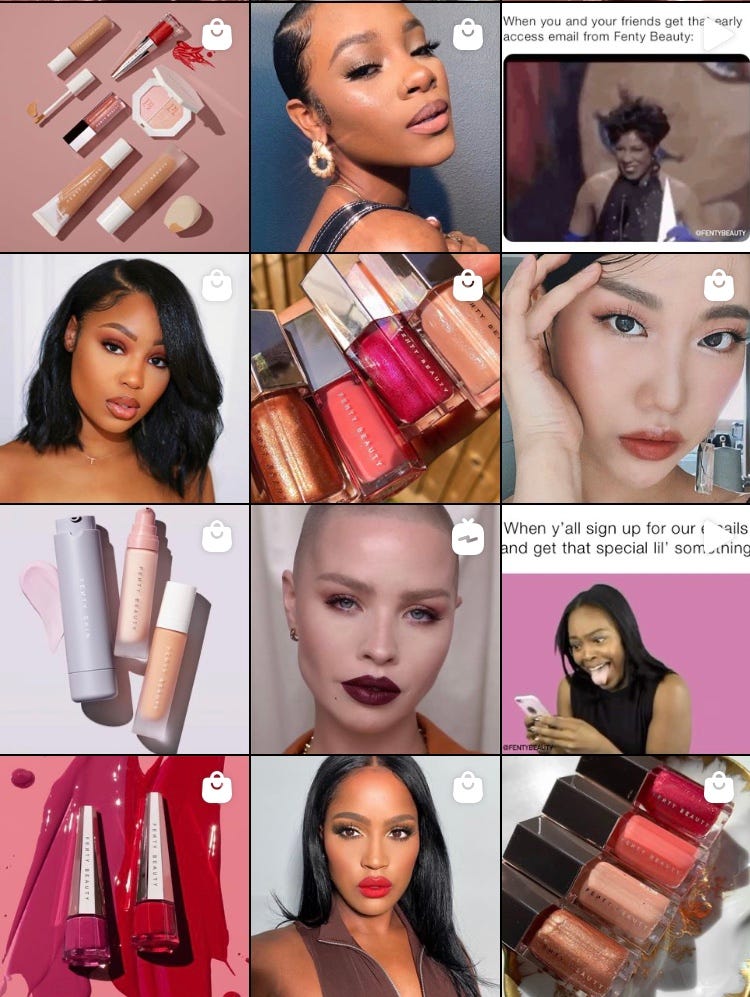Okay, so today I’m gonna spill the tea on what I’ve been digging into – Fenty Beauty’s social media game. I mean, everyone knows Rihanna’s a boss, but how does that translate online? I had to find out!

First things first, I started by just lurking. I hit up their Instagram, Twitter (or X, whatever it’s called now), Facebook, and even checked if they were doing anything on TikTok. You gotta see the whole picture, right?
- Instagram: This was their main stage, no doubt. Gorgeous photos, super diverse models, and everything just screamed “high-end but accessible.” I noticed they were really pushing user-generated content, reposting fans rocking Fenty looks. Smart move!
- Twitter/X: More about announcements, quick updates, and engaging with customers directly. It felt a bit more “real” and less polished than Insta. Saw some people complaining about shipping, and Fenty Beauty was actually responding. Good on them for addressing issues head-on.
- Facebook: Honestly, it felt a little like a mirror of Instagram, but aimed at an older audience, maybe? Less trendy, more traditional. Still, consistent branding and high-quality visuals.
- TikTok: Spotted some influencer collaborations and quick tutorials. They weren’t as active as on Instagram, but they were definitely trying to tap into that younger demographic. The content was fun and engaging, lots of focus on easy application.
Next up, I wanted to see how they were using different features on each platform. On Instagram, they were killing it with Reels, showing off products in action. Stories were used for quick promotions and behind-the-scenes glimpses. On Twitter, they were running polls and Q&As to get feedback from their followers. It wasn’t just about posting pretty pictures; they were actively trying to build a community.
Then, I started digging into the numbers. I used some free social media analytics tools to get a sense of their engagement rates. Instagram was, unsurprisingly, their strongest platform, with the highest likes and comments per post. Twitter was good for driving traffic to their website, and TikTok had potential for viral reach. I couldn’t get super in-depth data without paying for fancy software, but I got a decent overview.
One thing that really stood out to me was their commitment to inclusivity. They weren’t just using diverse models in their ads; they were also showcasing a wide range of skin tones and body types in their user-generated content. It felt genuine, not just like they were ticking boxes. This is crucial for building trust with your audience, especially in the beauty industry.
Finally, I tried to figure out their overall strategy. It seemed like they were aiming for a multi-pronged approach, using each platform to reach a different segment of their target audience. Instagram was for building brand awareness and showcasing their products. Twitter was for customer service and quick updates. Facebook was for reaching a broader, more general audience. And TikTok was for capturing the attention of Gen Z.

So, what’s the takeaway? Fenty Beauty’s social media success isn’t just about having a famous founder. It’s about having a clear understanding of your target audience, creating high-quality content, and actively engaging with your followers. And, of course, being authentic and inclusive. They’re not just selling makeup; they’re selling a feeling, a community, and a vision. And that’s something anyone can learn from!


